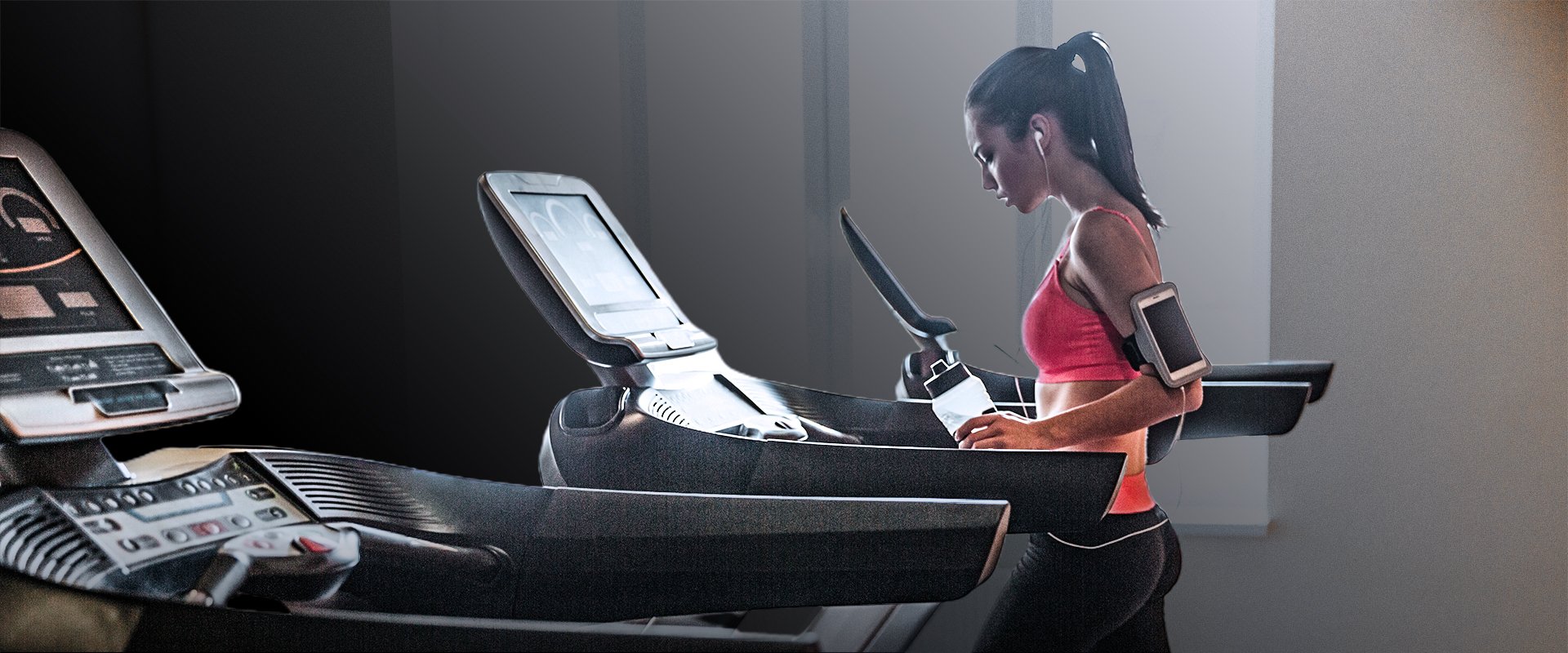
Physical Therapy for Return to Running
AT EVOLVE
Physical Therapy for Return to Running
HOW CAN PHYSICAL THERAPY HELP ME RETURN TO RUNNING?
Whether you are returning to running after a self-imposed break or getting back into it after an injury, you may be wondering, what is the best way to get back into the sport? Jumping right back into your pre-break volume is rarely a good idea due to the physiologic changes that happen when you take a long break from running. Understanding how to build back up will help you avoid injury and get back to the sport you love. Our physical therapists at Evolve can help ensure you are ready to start running, create a plan to address any impairments that may impact your running and then guide you through a successful return to running protocol.
HOW LONG WILL I NEED PHYSICAL THERAPY?
The length of a physical therapy plan of care may last only a few visits if the goal is to establish an exercise program for an uninjured player looking to reduce future injury risk and maximize performance. It could also last much longer if a player needs to undergo rehabilitation for a specific injury or following a surgery. Your therapist will discuss this with you at your first visit so that you know what to expect.
WHAT DOES PHYSICAL THERAPY TO PROMOTE RETURN TO RUNNING LOOK LIKE?
When a runner comes to physical therapy looking for help returning to running we take them through a few first steps. First, my team of physical therapists will ask about their history with running, any injuries they are experiencing now or have experienced due to running in the past and what their goals are for future running. We will gather any injury- or surgery-related protocols from their doctors to guide their rehab and return to running. We will then perform a physical examination to assess the injured area and also to assess other components of the body that are important for running like hip strength, core stability, ankle mobility and so forth. With all of this information we will create a plan to address any injuries while also building the necessary strength, motor control, endurance and mobility needed throughout the body to return successfully to running. Once cleared to begin a return to running protocol they will be taken through a progressive series of activities that usually starts with strength training and walking and progresses eventually to a full return to running. As they go we will be assessing their response to running, looking out for any symptom exacerbation or new issues and helping them make modifications and decisions along the way.
HOW LONG DOES A RETURN TO RUNNING PROGRAM TAKE?
This is a great question and one your therapist can answer as you begin to work together. Most return to run protocols for runners who have taken four or more weeks off take at least five weeks but the full length is highly dependent on several factors. Below are some of the factors that determine when an athlete is ready to return to running:How much rehab does a runner need to heal their injury so that it is ready to withstand the forces of running?
When does your physician, surgeon or therapist clear you to begin plyometric exercises and longer distance walking both of which are important precursors to a return to running protocol?
Are there other impairments that have developed due to a period of inactivity that also need to be addressed?
How well does the injury tolerate the increase in running volume, as that determines to some degree how quickly you can progress through the program
How much volume you were running before the break matters, as you will need to gradually build back to that volume Call to Schedule a Consultation! 1-718-258-3300
End Injury Progression
Physical therapy for Returning to Running has proven to prevent injury, slow and even stop pain issues, improve performance, and reverse injury progression in many cases.
Relieve Pain
The movements used in this technique can target your entire body helping you to manage discomfort and pain during the course of your physical therapy treatments.
Improve Range of Motion
Posture awareness is an important area to focus on due to the fact that certain positions may cause you further discomfort and pain.
Restore Mobility
You can regain mobility and flexibility by taking part in the stretches and exercises as prescribed by your physical therapist.
WHY DO I NEED TO RETURN TO RUNNING GRADUALLY?
If you decide to work with a physical therapist to help with Return to Running related issues, your entire treatment plan could consist of around 8-20+ different return to running physical therapy sessions that will each last 60-90 minutes. Once you complete your customized physical therapy treatment plan, you will be able to continue to do the prescribed stretches and exercises utilized during your PT sessions yet in the comfort of your own home.
Looking for the cause of an injury
You might be wondering why therapists put you through such a rigorous and gradual program when returning to running. Running is an activity that is both higher impact and also repetitive. These types of activities place a higher degree of stress throughout the joints, bones, tendons, muscles and ligaments. When you begin to run you typically start with shorter, easier runs and over time, as you become more fit, build up in speed, duration and frequency of runs. This gradual increase in volume and intensity promotes physiologic adaptations in body tissues so that they are able to gradually withstand the increasing load you place through it as you progress. So while the body can positively adapt to the increasing volume of running, the opposite is also true. When you take time off, especially more than 4 weeks, these adaptations begin to reverse. Your tissues are no longer capable of withstanding the forces placed on it by your earlier run volume and intensity. The longer the break, the more those adaptations decrease and eventually returning to running too quickly or at too high of an intensity will overload the deacclimatized tissues in a way that will likely cause injury. Add to this mix a running injury, where tissues are not as healthy as they normally are, and you have a recipe for ongoing or new injuries if you don’t approach returning to running the right way. A return to run protocol aims to combat these concerns and with the help of your physical therapist you can feel confident you are progressing in a safe and effective manner.
WHAT DOES A RETURN TO RUN PROTOCOL LOOK LIKE?
A return to run protocol should be individualized and your physical therapist will always take your history, injury, goals and needs into account when creating a return to run protocol for you. You may run across different versions of return to run protocols for an injured runner, but each follows the same general principles:- Rehab is needed to address the injury and ensure the injured tissues are ready to begin loading more aggressively
- It is important to initiate higher impact activities like progressive plyometrics before running
- A runner is able to walk longer distances without pain or changes in their gait before initiating running
- Running begins in short bouts with at least 24 hours rest in between
- Running volume increases about 10% each week
- Specific criteria exists to evaluate any onset of pain, i.e. when it is ok to push through and when a runner needs to stop progressing or regress
- Guidelines are provided on when it is ok to begin speed work or hill workouts
- A complementary strength program continues throughout the program
WE ARE HERE TO SUPPORT YOU
Here at Evolve we love our runners. For many athletes running brings them great joy and satisfaction and we enjoy helping these athletes get back to the sport they love. If you are an injured runner or even if you would like to start running but aren’t sure if your body is ready, we are here to support you. Call to schedule an evaluation with Evolve today and learn how our physical therapists can get you running successfully Call to Schedule a Consultation! 1-718-258-3300
Mill Basin (located in Harbor Fitness)
6161 Strickland Ave
Brooklyn, NY 11234
Monday: 7am-8pm
Tuesday: 7am-8pm
Wednesday: 8am-5pm
Thursday: 7am-8pm
Friday: 8am-1pm
Park Slope (located in Harbor Fitness)
550 5th Ave.
Brooklyn, NY 11215
Monday: 9am-8pm
Tuesday: 8am-6pm
Wednesday: 9am-8pm
Thursday: 8am-6pm
Friday: 8am-3pm
Gravesend
372 Avenue U
Brooklyn, NY 11223
Monday-Thursday: 8am-8pm
Friday: 8am-3pm
Ready to take the next step to a healthier you?
Contact Us Today!
PHYSICAL THERAPY AND RETURN TO RUNNING!
Need physical therapy to Return to Running?
Let our caring and compassionate physical therapists help you with relieving pain while getting you back on your feet comfortably.
Call now to schedule your first PT consultation free of charge.
Call: 1-718-957-2422







